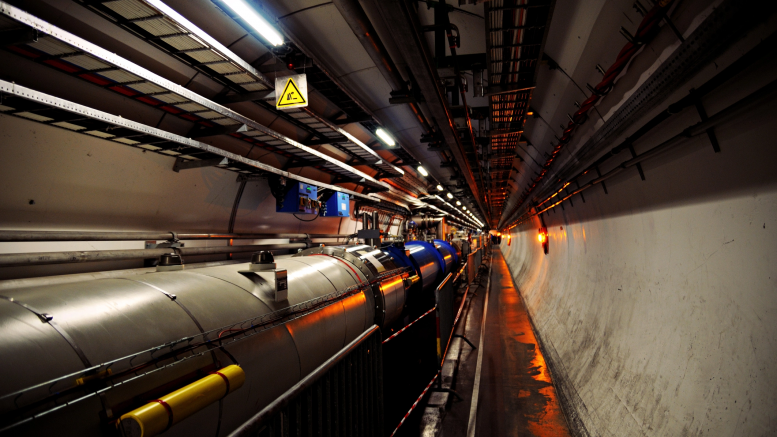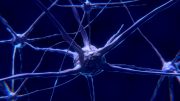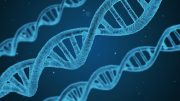After physicists at CERN restarted the Large Hadron Collider (LHC) for its Run 3 set of data collection in the summer of 2022, new analyses dependent on high-mass mother (decay from) particles, especially the Higgs boson, increased in production frequency dramatically. Running at the higher energy was a first step towards expanding the data sets needed for post-Higgs discovery (2012) particle findings.
With designs finalized in 2020, and beginning intermediate civil engineering construction in 2018, the High Luminosity-Large Hadron Collider (HL-LHC, formerly HiLumi LHC) seeks to expand the particle data yield through a series of incremental upgrades by 2029. These upgrades, involving a material budget of 950 million Swiss francs (~ $950.5 million), have a primary goal of increasing the upper potential of integrated luminosity for all experimental detectors.

Civil engineering upgrades, such as the concrete coating of ATLAS experiment access tunnels, are the first steps towards the long-term HL-LHC plans. | Source: CERN
The LHC Run 2 produced integrated luminosities of approximately 150 fb^{-1} of collision data, while the proposed plans for the HL-LHC are projected to produce greater than 250 fb^{-1} of data yearly, capable of collection up to 4000 fb^{-1}.
Integrated Luminosity and Cross Section
The delivered luminosity (\mathcal{L}) is an accelerator parameter that measures the number of potential collisions that can be produced at detector-level per cm^2 per second. As delivered luminosity increases, the number of collisions increases proportionally. The luminosity can be obtained by multiplying the number of incoming protons from either side (N_{1,2}) in a conducted collision (N^2), divided by the time between each bunch of protons in the beam (t), along with the section of effective colliding protons at the interaction region (S_{\text{eff}}): \mathcal{L} \sim \frac{N^2}{t S_{\text{eff}}} A more common form for the equation can be derived using the crossing frequency of the proton bunches (f) to more aptly represent the \frac{N^2}{t} term, while writing the section of effective collisions in terms of its bunch cross section (\sigma)such that S_{\text{eff}} = 4 \pi \sigma^2: \mathcal{L} \sim \frac{fN^2}{4 \pi \sigma^2}=\frac{f N_1 N_2}{4 \pi \sigma _x \sigma _y}
As opposed to the branching ratio of a decay (the fraction of events for a given particle to decay in a certain mechanism), cross section, measured in barns (b), represents an important probabilistic value for the likelihood of certain events occurring through an interaction between two particles. Thus, its role in the denominator is intuitive, as it works inversely proportional to the number of potential scattering interactions.
By integrating the luminosity over a given period of time t_1 to t_2, the integrated luminosity (L=\int_{t_1}^{t_2} \mathcal{L} \, dt ) depicts an overall measurement of collected data, yielding valuable information to represent accelerator performance. Increasing integrated luminosity directly corresponds to an increased number of scattering events, which in turn translates to more data for rarer particle measurements.

New “crab cavity” projection facilities, used for tilt and to propel the proton beams in the desired direction, allow for the collision area to increase with precision and leave way for technical upgrades. | Source: CERN
The integrated luminosity is measured in terms of inverse cross section, so with regard to the energy levels of the LHC, it is depicted as inverse femtobarns (fb^{-1}), where one inverse femtobarn is approximately 100 trillion proton-proton collisions.
Accelerator Upgrades
There are a variety of methods to increase the integrated luminosity of an accelerator, such as focusing the beam to a tighter fit at the collision point or increasing the number of bunches (or similarly, the number of protons per bunch). These techniques require targeting a few major aspects of accelerator componentry, specifically the machine optics, Interaction Regions (IR) final-focusing quadrupole magnets, and injector chain restructuring, with careful monitoring of beam-beam limits in interactions, as well as the effect of event pileup and collimations.
Some techniques more heavily emphasized in the HL-LHC engineering plans include:
- Increases of superconducting quadrupole magnets from 8 tesla (T) to 12 T, using niobium-tin to achieve greater magnetic fields than the currently implemented niobium-titanium LHC magnets
- Dipole “bending” magnets generating magnetic fields of 11 T (compared to 8 T of current LHC) in a more compact form, also developed with niobium-tin
- Introduction of “crab cavities,” a method of boosting the transverse momentum of proton bunches before collision at the interaction point, allowing more effective overlap between opposing bunches along the beam
- Optical beam improvements to allow for tilted focusing, thus ensuring the collision rate remains more consistent during the life of a given beam
- Heightened machine protection to allow collimator absorption of stray particles that could otherwise damage surrounding machinery
- Upgraded linear accelerator, Linac4, to replace the first link of the injector chain, alongside new second (PS Booster), third (PS), and fourth (SPS) link upgrades, allowing for better pre-acceleration of proton bunches before entering the ring
- New superconducting power links using magnesium diboride, with currents of intensities up to 100,000 amps
Physics Searches and Consequences
The major implications of HL-LHC upgrades fall under two categories: physics discovery and technological advancement. For example, improved Standard Model measurements of values like neutrino masses, searches for beyond-Standard Model (BSM) particles, understanding of flavor physics with respect to the heavy fermions, in depth studies of Higgs boson behavior, and investigation into high-density/temperature quantum chromodynamics (QCD) matter, will gain substantive boosts from the higher integrated luminosity and event yield.

Long-coil niobium-tin quadrupole magnets for the final-focus fields in the upgraded accelerator also have implications in radiation-based medical treatments where magnetic beam control is vital. | Source: CERN
However, alongside these more direct improvements, a plethora of advancements in lateral fields can arise due to the major technological leaps to complete the accelerator upgrade. For instance, the new niobium-tin magnets for greater magnetic field strength provide insight into other applications of superconducting magnets, as seen in medical imaging and cancer treatment with hadron therapy. Additionally, the new superconducting cable upgrades using magnesium diboride for transportation of vast amounts of electrical power give way for sustainable transportation of large energies in a commercial or population setting.






Be the first to comment on "Performance Upgrades: HL-LHC Plans"